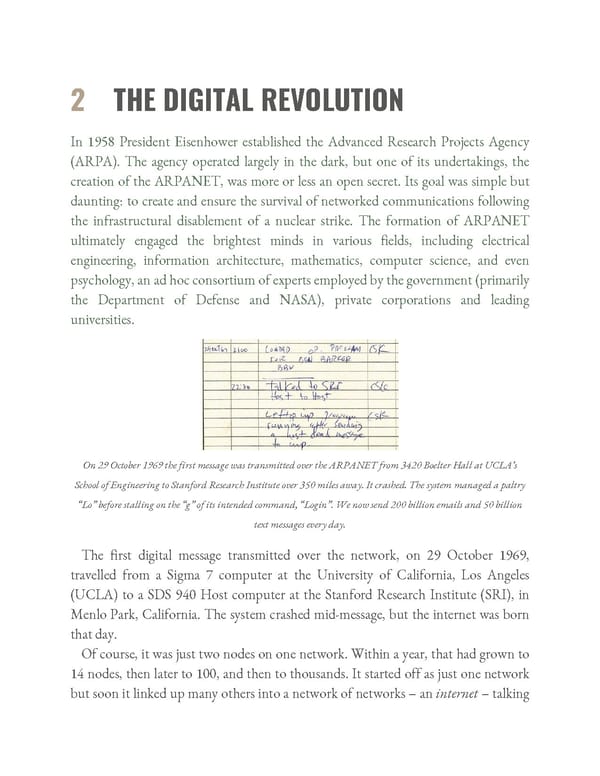2 THE DIGITAL REVOLUTION In 1958 President Eisenhower established the Advanced Research Projects Agency (ARPA). The agency operated largely in the dark, but one of its undertakings, the creation of the ARPANET, was more or less an open secret. Its goal was simple but daunting: to create and ensure the survival of networked communications following the infrastructural disablement of a nuclear strike. The formation of ARPANET ultimately engaged the brightest minds in various fields, including electrical engineering, information architecture, mathematics, computer science, and even psychology, an ad hoc consortium of experts employed by the government (primarily the Department of Defense and NASA), private corporations and leading universities. On 29 October 1969 the first message was transmitted over the ARPANET from 3420 Boelter Hall at UCLA’s School of Engineering to Stanford Research Institute over 350 miles away. It crashed. The system managed a paltry “Lo” before stalling on the “g” of its intended command, “Login”. We now send 200 billion emails and 50 billion text messages every day. The first digital message transmitted over the network, on 29 October 1969, travelled from a Sigma 7 computer at the University of California, Los Angeles (UCLA) to a SDS 940 Host computer at the Stanford Research Institute (SRI), in Menlo Park, California. The system crashed mid-message, but the internet was born that day. Of course, it was just two nodes on one network. Within a year, that had grown to 14 nodes, then later to 100, and then to thousands. It started off as just one network but soon it linked up many others into a network of networks – an internet – talking
 Ogilvy on Advertising in the Digital Age Page 16 Page 18
Ogilvy on Advertising in the Digital Age Page 16 Page 18